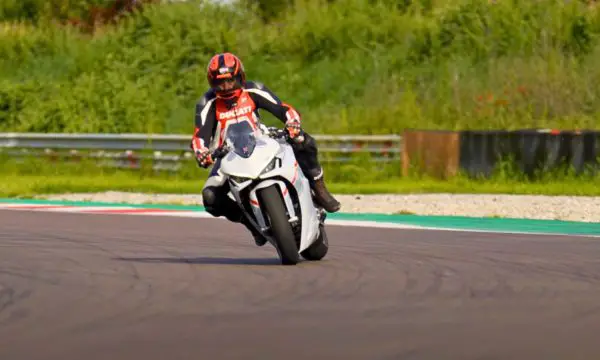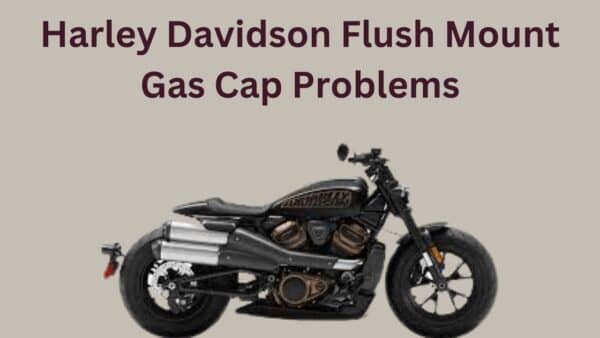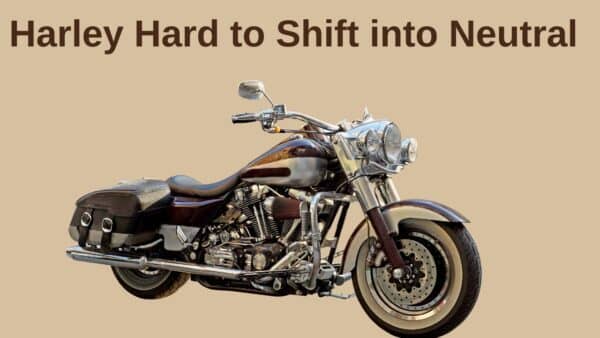The Ducati Supersport, known for its striking design and exhilarating performance, epitomizes the fusion of sport riding.

However, despite its celebrated status among motorcycle enthusiasts, the Supersport is not without its challenges.
Owners and riders have reported a range of problems, including mechanical issues, comfort concerns, and maintenance quirks.
In this article, we will explore common problems associated with Ducati Supersport and their potential solutions.
Ducati Supersport Problems
Ducati Supersport problems are clutch issues, mirror vibration, overheating, radiator leakage, side stand issues and sometimes it’s hard to start the bike due to several factors.

1. Clutch Issue
A common problem some owners face is with the motorcycle’s clutch system.
This issue can result in difficulty in engaging or disengaging the clutch, a spongy feel in the clutch lever, or an unusual noise coming from the clutch area.
The root cause of these symptoms often points to either wear and tear of the clutch plates or a need for adjustment in the clutch cable or hydraulic system.
To fix the issue, first check if the clutch cable is properly adjusted. A cable that’s too tight or too loose can cause engagement problems.
If your Supersport uses a hydraulic clutch system, ensure there’s no air trapped in the system. You may need to bleed the clutch hydraulics to remove any air bubbles.
Over time, clutch plates can wear down, causing slipping or sticking. Inspect the clutch plates for wear and replace them if necessary.
Sometimes, simple cleaning and lubrication of the clutch components can solve the problem. Dust and debris can cause the clutch to stick or squeal.
2. Mirror Vibration
Owners have reported experiencing mirror vibration, an issue where the motorcycle’s mirrors vibrate excessively while riding.
This problem can significantly impede visibility, making it difficult for riders to use mirrors effectively to observe traffic and surroundings.
The issue is most prevalent at higher speeds or when the motorcycle is operating at higher RPMs,
The vibration originates from the engine or exhaust vibrations being transferred to the chassis and, subsequently, to the mirrors.
To diagnose the issue, inspect the mirror mounts. Sometimes, simply tightening these mounts can reduce or eliminate the problem.
Ensure that all fasteners are secure, but be careful not to over-tighten, as this could damage the mounts or mirrors.
There are also aftermarket vibration dampers available that can be installed between the mirror and the mounting point.
These dampers are designed to absorb vibrations, thereby reducing the amount that reaches the mirrors.
Some riders find that switching to higher-quality aftermarket mirrors can resolve vibration issues.
Aftermarket options may offer better vibration resistance due to their design or the materials used.
3. Overheating
This issue can be particularly distressing because it not only reduces the motorcycle’s performance but can also lead to long-term engine damage.
Overheating in these models often stems from insufficient coolant, a malfunctioning radiator, a clogged cooling system, or a faulty thermostat.
To tackle the overheating problem, start by checking the coolant level and its condition, ensuring it is filled to the recommended level and free of any contaminants.
Related: Ducati Scrambler 5 Common Problems
If the coolant is in good shape, inspect the radiator for any signs of blockages or leaks.
A clogged radiator can’t efficiently dissipate heat, leading to increased engine temperatures.
Similarly, a clean cooling system ensures that coolant circulates smoothly, preventing hot spots that could cause overheating.
Lastly, verify the thermostat’s operation; a faulty thermostat might not open as it should, restricting coolant flow and leading to heat buildup.
Addressing these areas can significantly mitigate overheating issues, ensuring your Supersport runs smoothly and maintains its performance integrity.
4. Leak Radiator
This problem typically stems from the radiator’s exposure to debris during rides, which can cause punctures or cracks.
However, the wear and tear from regular use can weaken the radiator’s structure over time, leading to leaks.
To address a leaking radiator, start by identifying the source of the leak. If the leak is minor, using a radiator sealant might be a temporary solution.
However, for larger leaks or damaged radiators, replacement is often the most reliable and long-term fix.
Ensure the motorcycle is cooled down before attempting any repairs to avoid burns or other injuries.
After repairing or replacing the radiator, it’s crucial to refill the coolant to the appropriate levels, ensuring the mix is suitable for your Ducati’s requirements.
5. Side Stand Issue
A common issue that owners often encounter relates to the motorcycle’s sidestand.
The primary concern involves the side stand sensor, which, if malfunctioning, can prevent the bike from starting.
This sensor is designed to ensure that the bike does not start if the stand is down, a safety feature to avoid potential accidents.
However, a faulty sensor or mechanism can misinform the bike’s system and cause the stand to be down even when it’s retracted.
This can be particularly frustrating, leaving riders stranded or unable to start their motorcycles.
To fix the issue, you should ensure that the side stand is fully retracted. Sometimes, debris or dirt can obstruct it from fully retracting.
Locate the side stand sensor near the stand hinge and check for any visible damage or loose connections.
Manually activate the sensor by moving it (if possible) to see if there’s any response when attempting to start the bike.
If the issue persists, it’s best to take your bike to a certified mechanic or dealership for a thorough inspection and potential sensor replacement.
6. Hard Starting
One common issue that Ducati Supersport owners encounter is the problem of hard starting.
This means the motorcycle struggles to start or requires multiple attempts to get the engine running.
Generally, this issue can stem from a variety of sources, such as battery problems, fuel system issues, or spark plug degradation.
To fix the issue, the battery should be your first checkpoint. Ensure it is fully charged and in good condition.
A weak or deteriorating battery often cannot provide enough power to start the engine efficiently.
You should also make sure the fuel tank has an adequate amount of fresh gasoline.
Old or contaminated fuel can clog the fuel system, hindering the engine’s ability to start. Also, check the fuel lines for any blockages or leaks.
The spark plugs are crucial for igniting the fuel mixture in the engine.
If they are dirty or worn out, they may not work correctly, leading to hard starting. Inspect the spark plugs and replace them if necessary.

Ahtsham Younas is a passionate blogger and content writer. He loves to ride motorcycles and learn the mechanical process behind the motorcycles.
He has been writing articles in the motorcycle industry since 2019 and has learned many things about motorbike niches.


